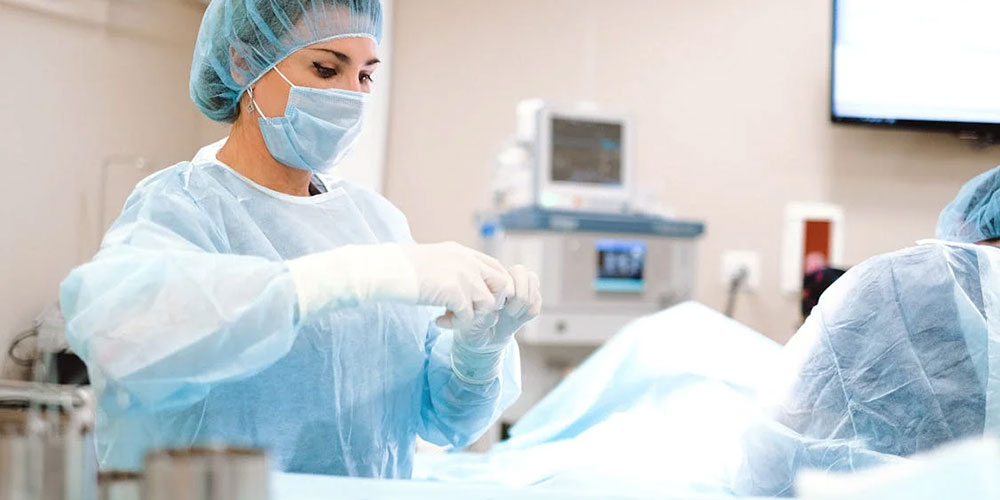Modern health care technologies and treatments are so common that we often don’t think twice about them. X-rays, ultrasounds, and appendectomies have just become a fact of life. It’s easy to take such medical advances for granted. But staying safe and healthy would be far more difficult without them.
Consider for a moment how lucky we are to have access to anesthesia. Without it, many routine surgeries would be impossible.
While you probably have a vague understanding of anesthesia, you likely have some questions. What is it, exactly? And how does anesthesia work? Take a look at this overview to find out.
What is anesthesia?
In the simplest sense, anesthesia is medication that helps alleviate pain or discomfort during a procedure. There are numerous types and delivery methods. Additionally, different drugs can be used in combinations as appropriate for the patient and the procedure.
Dr. Edna Ma, an anesthesiologist who practices at 90210 Surgery Medical Center, adds that anesthesia consists of three major components. They can be used together or individually. These components are:
- Analgesia—pain reduction or elimination
- Amnesia—which is temporary and may include unconsciousness
- Muscle relaxation
While you already know that anesthesia is used during major surgeries, that’s not the only use. It’s also administered for noninvasive procedures that may otherwise be uncomfortable. Dr. Ma says anesthesia may be used when obtaining magnetic resonance imaging (MRI) from a child or a patient who’s claustrophobic, for example.
“Having a near motionless patient is critical for obtaining optimal MRI images.”
“Having a near motionless patient is critical for obtaining optimal MRI images,” she explains. “An anesthetized patient would be essentially motionless.”
What are the different types of anesthesia?
While there are numerous medications anesthesiologists use in different combinations, Dr. Ma highlights four main types. Each of these categories is used for different types of care. This is by no means an exhaustive explanation, but it should give you an idea of what you can expect should you or a loved one need a procedure.”
- General anesthesia is used to render a patient unconscious and is administered for invasive operations like a laparoscopic hernia repair. Dr. Ma further adds that the anesthesiologist controls the patient’s breathing.
- Sedation anesthesia is used for minimally invasive procedures like colonoscopies. “This includes light-to-moderate IV sedation with the patient breathing independently,” Dr. Ma explains.
- 3. Local anesthesia involves injection into a surgical site, but the patient remains awake. It’s often used to numb the area before a patient gets stitches.
- 4. Regional anesthesia numbs a large area of the body while the patient remains awake. Perhaps the most widely recognized use is an epidural to make childbirth more comfortable for women.
How does anesthesia work?
Based on the information above, it’s clear there isn’t one specific way anesthesia works. And researchers are really just starting to gain a sense of how different medications used to numb or induce unconsciousness work. They think the drugs target different proteins in the membranes around nerve cells.
Propofol is one of the most common medications used for general anesthesia. A 2018 study focused specifically on propofol to dig into what mechanisms are at play. The research found this type of anesthesia restricts movement of a type of protein in a way that inhibits communication between neurons. But the study’s authors also note there’s still a lot yet to learn.
And remember, different drugs achieve different results. The question of how anesthesia works is further complicated by the fact that different types often need to be used in combination with each other. A single medication may not be sufficient for a given procedure.
“A drug such as propofol can induce unconsciousness, but has no analgesic effects.”
“A drug such as propofol can induce unconsciousness, but has no analgesic effects,” Dr. Ma points out.
It’s essential that she knows what each medication does as well as the appropriate combination at each stage of a procedure. Anesthesia is not a matter of flipping a switch and walking away. It requires constant monitoring and adjustment, particularly for complex surgeries.
“When administering anesthesia for an ‘awake craniotomy,’ the patient will need to be completely motionless,” Dr. Ma says. “However, during part of the surgery, the patient will need to be awake and talking.”
Another example Dr. Ma offers is for a shoulder surgery where the patient would be sitting. It would require general anesthesia and a nerve block (regional anesthesia) may also be placed prior to surgery to help minimize pain and aid in the recovery process.
If it all sounds like a careful balancing act, that’s because it is. This is why any provider who administers anesthesia must be highly trained. These medical professionals include anesthesiologists, nurse anesthetists, oral surgeons, dentists, and anesthesiologist assistants.
Is anesthesia dangerous?
If you look into the history of anesthesia, there’s no denying it was once a risky practice. It wasn’t until 1846 that the first successful surgery using anesthesia occurred. The field rapidly advanced in the 1900s and anesthesia is now considered commonplace. While it’s still possible for patients to experience complications, they’re rare.
“Modern anesthesia is extremely safe,” Dr. Ma emphasizes. “The overall mortality rate is about 0.03, or 3 deaths per 10,000 surgeries or procedures involving anesthesia.”
“Modern anesthesia is extremely safe.”
Advance your knowledge of this field
How does anesthesia work? You can see it depends on the type of drug and the care being provided. There are so variables that come into play when providers are determining the best anesthesia care plan for individual patients. They may even have to adjust their plans during a procedure.
While that might sound scary, health care professionals who administer anesthesia are trained to be prepared for anything. This is particularly true of anesthesiologists. Learn more about what these specialists do by checking out our article “What Is an Anesthesiologist? Understanding This Surgical Care Role.”

